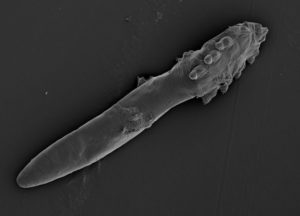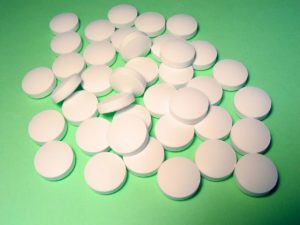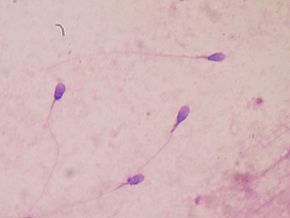After the nonsense of the study published earlier in the year and the resulting media coverage stating that most "cancer is due to bad luck", it is great to read this recent research disputing the earlier study's conclusions. The new study concludes that bad luck accounts for only a small portion of cancers (10% to 30%), and that "external factors", such as environmental toxins, behaviors, and infections, account for the vast majority (90% to 70%) of cancers. Of course. From Medscape:
Most Cancers Are Not Due to 'Bad Luck'
This year began with the media buzzing over a study that suggested many cancer types can be chalked up to "bad luck." As the year draws to a close, a new study that reanalyzed some of the previous data concludes that bad luck accounts for only a small portion ― up to a third ― of cancers, and that external factors, such as environmental toxins and behaviors, account for the vast majority (90% to 70%).
As previously reported by Medscape Medical News, researchers from Johns Hopkins University, Baltimore, Maryland, reported that in about two thirds (22 of the 31) of cancer tissue types that they had investigated, the development of cancer could be largely explained by the bad luck of random mutations that arise during DNA replication in normal nonmalignant stem cells. The new study, published in Nature, challenges those findings and instead states that there is much more at stake than just a bout of bad luck.
A team led by Yusuf Hannun, MD, director of the Stony Brook University Cancer Center, in New York, found that intrinsic or internal risk factors contribute only modestly ― less than approximately 10% to 30% of lifetime risk ― to cancer development. Their research concluded that instead, cancer risk is heavily influenced by extrinsic or external factors, such as environmental toxins, behaviors, and infections.
"We used four distinct analytic approaches to assess cancer risk," Dr Hannun told Medscape Medical News. "Interestingly, each of the approaches used different datasets, and all of them came up with similar conclusions — that 70% to 90% of cancer risk seems to be attributed to extrinsic factors, and this is more in line with what we've seen with epidemiologic studies.
The original study on bad luck was published in Science on January 2 and immediately generated quite a bit of discussion, scrutiny, and opinion pieces, as well as many questions regarding the methods and calculations used in the study. Even the International Agency for Research on Cancer, the World Health Organization's specialized cancer agency, issued a press release saying that it "strongly disagrees with the conclusion" and warned that the message could harm cancer research and public health.
However, the authors found that this pattern was rare, and they determined that intrinsic factors played a vital role in only about 10% of cancers. In support of this finding are epidemiologic data, such as those that show that immigrants who move from countries with lower cancer incidence to countries with higher rates generally acquire the higher risk as they become more assimilated into their new country.
Second, the authors analyzed recent studies on mutational signatures in cancer and found that the majority of cancers, including colorectal, lung, bladder, and thyroid cancer, express mutations that are likely caused by extrinsic factors.Third, analysis of data from the Surveillance, Epidemiology, and End Results Program showed that for many cancers, incidence and mortality have been increasing, suggesting that external factors contribute heavily.

 We can't see them, but we all have little face mites that live in our faces, specifically in hair follicles. The scientific name of the face mites: Demodex folliculorum. There are at least 4 lineages of face mites that correspond to different regions of the world. Good thing they're harmless (we think).Gross but fascinating. From Wired:
We can't see them, but we all have little face mites that live in our faces, specifically in hair follicles. The scientific name of the face mites: Demodex folliculorum. There are at least 4 lineages of face mites that correspond to different regions of the world. Good thing they're harmless (we think).Gross but fascinating. From Wired: Research found that postmenopausal women with periodontal disease (gum disease) were more likely to develop breast cancer than women who did not have the chronic inflammatory disease. And it's a bigger risk among those who currently smoke or quit smoking within the last 20 years. The interesting part is the fact that periodontal disease is a bacterial disease and that it results in inflammation. An earlier
Research found that postmenopausal women with periodontal disease (gum disease) were more likely to develop breast cancer than women who did not have the chronic inflammatory disease. And it's a bigger risk among those who currently smoke or quit smoking within the last 20 years. The interesting part is the fact that periodontal disease is a bacterial disease and that it results in inflammation. An earlier  A University of Georgia review study of the research literature shows that drinking coffee (instead of a caffeine supplement) improves athletic endurance performance. Also, that caffeine from coffee has
A University of Georgia review study of the research literature shows that drinking coffee (instead of a caffeine supplement) improves athletic endurance performance. Also, that caffeine from coffee has  Interesting, but in some ways horrifying - the hidden world of microbes teeming around us. With new techniques such as genetic sequencing we now know that at least a couple of thousand different species live in our water pipes in
Interesting, but in some ways horrifying - the hidden world of microbes teeming around us. With new techniques such as genetic sequencing we now know that at least a couple of thousand different species live in our water pipes in  So many people I know complain of carpal tunnel syndrome, especially those who spend hours every day at a computer keyboard. Carpal tunnel syndrome is a hand and arm condition of numbness, pain, tingling, etc. caused by a pinched nerve in your wrist (pressure or compression of the median nerve). Treatments vary from physical therapy to steroids to surgery, with surgery being the recommended option by many doctors. So what is best?
So many people I know complain of carpal tunnel syndrome, especially those who spend hours every day at a computer keyboard. Carpal tunnel syndrome is a hand and arm condition of numbness, pain, tingling, etc. caused by a pinched nerve in your wrist (pressure or compression of the median nerve). Treatments vary from physical therapy to steroids to surgery, with surgery being the recommended option by many doctors. So what is best? The important thing learned from this study (though it was done in the laboratory and not directly on humans) is that it supports that apigenin (in the same chemical group as flavonoids) is important for neuron formation and for strengthening connections between brain cells.
The important thing learned from this study (though it was done in the laboratory and not directly on humans) is that it supports that apigenin (in the same chemical group as flavonoids) is important for neuron formation and for strengthening connections between brain cells. 
 A large study found that using antidepressants during the second or third trimester of pregnancy increases the risk that the child will have autism by 87%, especially if the mother takes selective serotonin reuptake inhibitors (SSRIs). A drawback was that the study looked at associations rather than actual cause (which would have meant randomly assigning women to either treatment or no treatment - which is unethical). From Medical Xpress:
A large study found that using antidepressants during the second or third trimester of pregnancy increases the risk that the child will have autism by 87%, especially if the mother takes selective serotonin reuptake inhibitors (SSRIs). A drawback was that the study looked at associations rather than actual cause (which would have meant randomly assigning women to either treatment or no treatment - which is unethical). From Medical Xpress: Recent research looked at environmental causes of male infertility, specifically endocrine-disrupting chemicals.
Recent research looked at environmental causes of male infertility, specifically endocrine-disrupting chemicals.